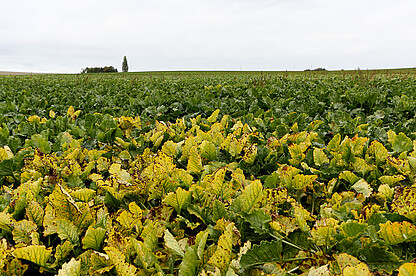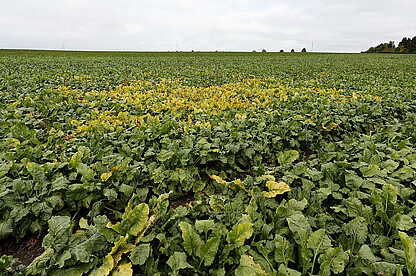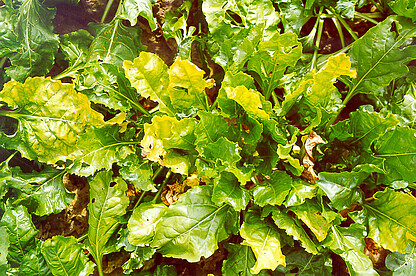Virus Yellows
Virus Yellows can be caused by five different viruses. The two most common viruses are Beet Mild Yellow Virus (BMYV) and Beet Necrotic Yellow Virus (BYV). The viruses are transmitted by aphids - primarily the "green peach aphids".
The green peach aphid can transmit up to five different yellowing viruses to sugar beet. The mild beet yellowing virus (BMYV) and the necrotic yellowing virus (BYV) are the most common. They multiply and spread in the plant. As a result, the vascular bundles are blocked and the nutrient supply is disturbed. The typical yellowing of the leaves occurs and the photosynthetically active leaf area is reduced. Yield losses of 30 to 50 percent can occur.
Yellowing usually occurs in nests in the summer stand, but rarely entire stands with yellow discoloured leaves can be observed. The first yellow nests appear from the end of June, depending on when the aphids attack in spring. The beets in the yellowing nests remain behind in growth. The yellow leaves stand rigid, when crushed the disease-typical "cracking" is produced. As the disease progresses, the leaves turn increasingly orange to brown from the edges. Alternaria sets in. In the case of heavy infestation, Virus Yellows can occur all over the country (France 2020).
In 2023, the first yellowing virus-tolerant varieties were approved in the EU.
Read more about Virus Yellows and our product range "VitalY".





